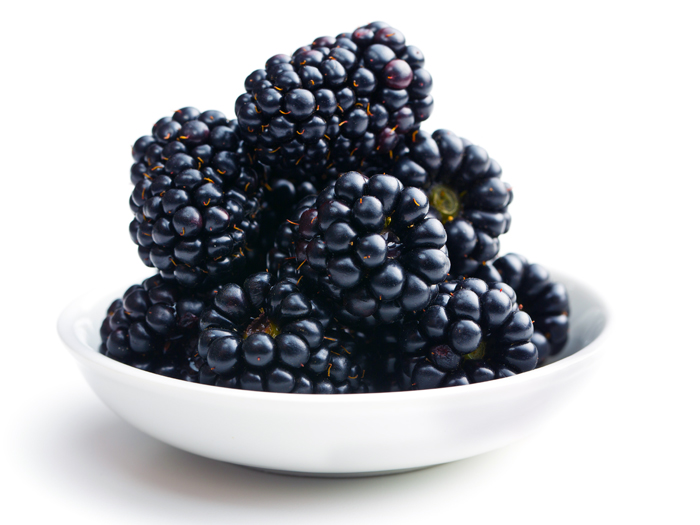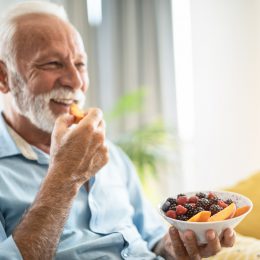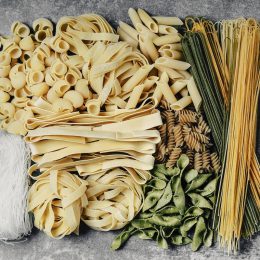18 Foods with More Fiber Than Oatmeal
Sick of the same breakfast every morning? Get your fiber fix with these sweet, savory, and satisfying high-fiber foods.

Fiber could use a rebrand.
There’s nothing wrong with the nutrient’s association with trips to the restroom, but the benefits of getting enough fiber go beyond helping your digestive system stay healthy, says Amy Gorin, R.D.N., owner of Amy Gorin Nutrition in the New York City area.
A high-fiber diet may also help reduce cholesterol and regulate blood sugar levels, thus lowering your risk of heart disease and type 2 diabetes.
Plus, fiber keeps you feeling full for longer periods of time, which may help you reduce your calorie consumption and lose excess weight.
What’s not to love about this all-star nutrient?
Most people associate fiber with flavorless foods like bran and oats (which, to be fair, can taste amazing with these oatmeal ideas). But there are so many other easy ways to pack fiber into your diet and get the health benefits.
How Much Fiber Do You Need?
The National Academy of Medicine recommends:
- Women 51 and older: 21 grams of fiber per day
- Men 51 and older: 30 grams of fiber per day
These may seem like reasonable numbers, but most Americans aren’t getting enough. Women ages 60 and older are averaging only 15 grams per day, and men just 18, according to a survey from the U.S. Department of Agriculture.
To help you meet your daily needs and maintain variety in your diet, here are 18 foods that contain more fiber per serving than oatmeal, which clocks in at four grams per ½ cup. Chances are you’re already eating many of them, but if not, add a few to your weekly grocery list to reap all the benefits of a fiber-packed diet.
As always, if you have a chronic condition or take medications, talk to your doctor or a dietitian about your specific nutrition needs.
And if you haven’t been eating a lot of fiber-rich foods, add them to your diet gradually (about ½ cup of beans per day, for example) and drink plenty of water to minimize the risk of an upset stomach.
Foods With More Fiber Than Oatmeal
1. Apples
Fiber: 4.4 grams per medium apple with skin
Next time you’re rushing out of the house, grab an apple to eat on the go. This convenient fruit delivers plenty of fiber along with natural sugar to provide a steady stream of energy.
For even more staying power, pair your apple with a source of healthy fat or protein like a tablespoon of almond butter, suggests Miho Hatanaka, R.D.N.
See more nutritionist-approved snack ideas in our guide to the best snacks you can make at home.
2. Artichokes
Fiber: 6.8 grams per medium artichoke, cooked
Because of their tough exterior, preparing and cooking artichokes is a bit labor-intensive. But it’s worth the effort! In addition to their fiber content, artichokes are a good source of vitamins C and K—a nutrient known to play a role in bone health.
If that’s not enough to motivate you to prepare this prickly vegetable, you’re in luck. Frozen, canned, or jarred artichokes save you prep time.
3. Avocados
Fiber: 6.7 grams per ½ avocado
Adding half or one-quarter of a creamy avocado to your salad or sandwich will not only help keep you regular, but it also delivers heart-healthy monounsaturated fats along with many essential vitamins and minerals.
Just be sure to keep portions in check, and make half an avocado your max serving size.
“A little goes a long way since avocados are 85 percent fat,” says Amy Shapiro, R.D., founder of Real Nutrition NYC.
4. Black Beans
Fiber: 15 grams per cup, cooked
You know beans are rich in fiber, but did you know just how rich? Just ½ cup of black beans packs in almost eight grams.
Toss them on your salad for lunch, or try them in a brown rice fiesta bowl that’s a perfect meal for one person.
Worried about unpleasant side effects? Soaking dried beans in water before you cook them can help remove some of the indigestible sugars that cause flatulence, says Keri Gans, R.D.N., author of The Small Change Diet.
If you’re using dried beans, cover them with two to three inches of cool, clean water. Set aside at room temperature for eight hours or overnight, and drain well. For canned beans, rinse well in cool water before eating.
5. Blackberries
Fiber: 7.6 grams per cup
They may not be as widely available as strawberries and blueberries, but in-season blackberries are a sweet treat that’s hard to beat.
In addition to the fiber, a cup of blackberries delivers 50 percent of your daily vitamin C needs.
Fresh blackberries are great on their own or as an ingredient in a high-protein breakfast bowl.
6. Broccoli
Fiber: 5.1 grams per cup, cooked
As if you need another reason to pack more vegetables into your diet, most are an excellent source of fiber. Broccoli gets bonus points for being incredibly easy to make: Steam, add a pinch of salt and pepper if you want, and enjoy.
One cup of broccoli contains more than 100 percent of your daily vitamin C and K needs, along with nearly 50 percent of your daily vitamin A needs. Those little stalks pack a serious nutrient punch!
7. Bulgur
Fiber: 8.2 grams per cup, cooked
The next time you’re at the supermarket, head to the bulk bins and fill a bag with bulgur. Like most whole grains, it’s packed with fiber and one of the best carbs for weight loss. Unlike most whole grains, you probably haven’t eaten it often enough to be tired of it.
8. Butternut Squash
Fiber: 6.6 grams per cup, cubed and cooked
Contrary to popular belief, butternut squash is technically a fruit, not a vegetable. But that doesn’t change the fact that it’s a wonderful addition to many sweet and savory recipes and is also great on its own, roasted or baked.
Butternut squash is low in calories, with only 82 per cup, but high in nutrients, including magnesium, potassium, and vitamins A and C.
Most notably, a cup of cooked butternut squash provides more than 100 percent of your daily vitamin A, an essential vitamin for maintaining good vision and healthy skin.
9. Chia Seeds
Fiber: 9.8 grams per ounce
Chia seeds make adding a hefty dose of fiber to your daily diet a cinch!
You can sprinkle them on top of Greek yogurt, oatmeal, or cold cereal, or blend them with other wholesome ingredients for an energizing smoothie that doesn’t taste like chalk.
You can even use one tablespoon of chia seeds plus one cup of water as a vegan substitute for one egg in baking. Allow the chia seeds to sit in water for about 15 minutes so it forms a gel-like substance, then use it to make your favorite muffins, cookies, or whatever else may call for an egg.
10. Chickpeas
Fiber: 12.5 grams per cup, cooked
Chickpeas provide a powerful punch of protein and fiber, making them an incredibly satisfying snack.
You can roast them to make an easy snack at home or buy them already roasted.
“Roasted chickpeas are one of my favorite snacks to buy,” says Marisa Moore, R.D.N. The packaged ones are incredibly convenient and stay crispy much longer than homemade versions, she says.
You can also blend chickpeas to make hummus or toss a ½ cup of chickpeas on your salad.
11. Collard Greens
Fiber: 7.6 grams per cup, cooked
All leafy greens are packed with nutrients, but collards are king when it comes to fiber. Collard greens have a slightly bitter flavor and a chewier texture than kale.
You won’t want to eat them raw—braise, steam, or stir-fry to break down some of the toughness of the leaves.
Collard greens are also amazing for rolling up your favorite sandwich ingredients or a burger patty when you’re watching your carb intake.
Subscribe to our newsletter
It's quick and easy. You could be one of the 13 million people who are eligible.
Already a member? Click to discover our 15,000+ participating locations.
Follow Us
12. Edamame
Fiber: 8.1 grams per cup, cooked
Edamame is best known as everyone’s favorite appetizer for sushi dinner. But you can also buy frozen, pre-blanched edamame in the freezer aisle at many supermarkets.
Simply heat it up in the microwave or on the stove, adding a little olive oil and fresh garlic if you want. You’ll have a high-fiber savory snack ready in minutes.
13. Lentils
Fiber: 15.6 grams per cup, cooked
Lentils are kitchen all-stars. They take less time to cook and are more versatile than many other legumes. And in addition to the fiber they deliver, they pack 18 grams of protein per cup.
Lentils can easily take the place of meat in dishes and are also one of the cheapest veggies money can buy.
For simple serving ideas, check out our guide to seven protein-packed vegetables that are incredibly easy to prep.
14. Peas
Fiber: 8.8 grams per cup, cooked
Like lentils, peas are not only rich in complex carbohydrates like fiber, but they’re also a great source of plant protein.
For a quick and tasty fiber-packed meal, try this three-ingredient dinner recipe:
- Combine ½ cup cooked whole wheat pasta with premade tomato sauce and ½ cup frozen peas. The warm pasta will quickly make the peas the perfect temperature.
15. Pears
Fiber: 5.5 grams per medium pear
Pears offer a convenient way to sneak in some fiber on the go. Like apples, you’ll boost the fruit’s staying power by pairing it with some protein or fat.
Try chopped pear over Greek yogurt or with a small handful of mixed nuts.
Or put a fresh spin on greens with this seven-minute chicken and pear salad.
16. Quinoa
Fiber: 5.2 grams per cup, cooked
Quinoa is incredibly versatile and easy to prepare. Cook it on the stove—use 1¼ cups of water for every cup of quinoa—and then store it in the fridge to use all week.
You can mix plain quinoa into salads, stuff it into bell peppers with black beans and other veggies, add it to soups and stews, or use it as a base for stir-fry. It’s richer in both protein and fiber than even brown rice.
17. Raspberries
Fiber: 8 grams per cup
Raspberries aren’t exactly a hard sell—they’re basically nature’s candy. The hit of fiber is just a nice bonus.
Eat them plain, mix them into a smoothie, or use them in muffins. You can’t go wrong!
18. Split Peas
Fiber: 16.3 grams per cup, cooked
Split peas form a terrific base for soups and stews—with not only fiber but also 16 grams of protein.
Thanks to this combo, the result is sure to be flavorful and filling. Try a batch of potato split pea soup for meals that you can make ahead for the week.
Add some, or all, of these high-fiber foods to your shopping list:
- Apples
- Artichokes
- Avocados
- Black Beans
- Blackberries
- Broccoli
- Bulgur
- Butternut Squash
- Chia Seeds
- Chickpeas
- Collard Greens
- Edamame
- Lentils
- Peas
- Pears
- Quinoa
- Raspberries
- Split Peas
Take Your Favorite SilverSneakers Classes Online!
SilverSneakers members can access live fitness classes and wellness workshops through SilverSneakers LIVE. See the latest schedule and RSVP for classes here.
Not a member? If you have a Medicare Plan, it may include SilverSneakers—at no additional cost. Check your eligibility instantly here.




